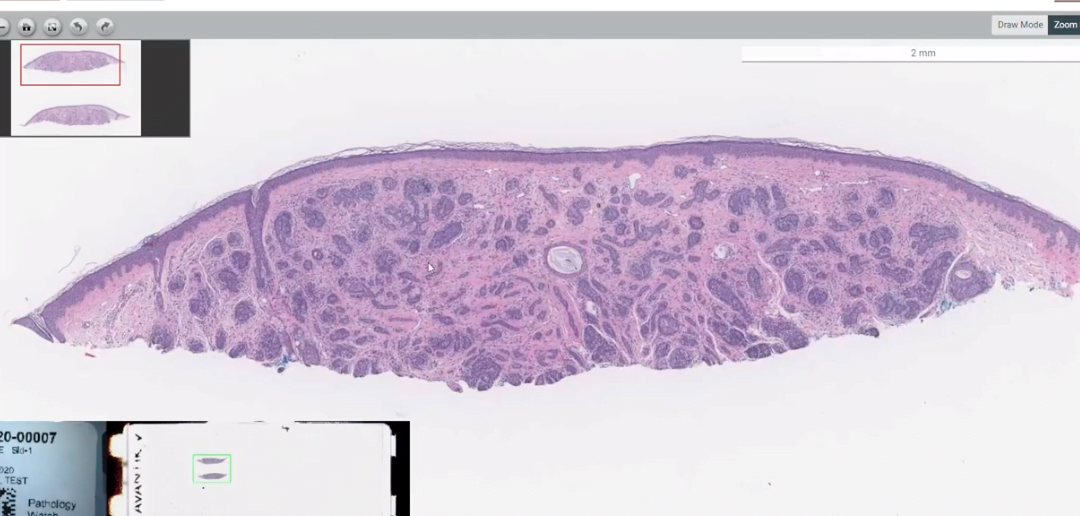Images shown are not intended to be used for the diagnosis or treatment of a disease or condition.
At first glance, these individual lesions may look like basal cell carcinoma, but don’t be confused: Trichoepithelioma appears as firm, rounded, and shiny tumors that originate in the hair follicle.
In this episode of Digital Dermpath Digest, Rajni Mandal, MD, a dermatopathologist at PathologyWatch, discusses distinct features of trichoepithelioma and how to identify them.
What Is Trichoepithelioma?
The distinct rounded and shiny appearance of this rare benign skin lesion occurs primarily on the cheeks, on the eyelids, and around the nose, yet it can spread to arms and stomach. They typically increase in number as the patient ages and presents as papillary-mesenchymal bodies, granulomas, and signs of calcification.
“There are three clinical types of trichoepithelioma,” says Mandal, “Solitary, multiple, and desmoplastic.”
- Solitary trichoepithelioma: This variant is characterized by a single firm dermal papule or nodule that often appears on the face.
- Multiple trichoepitheliomas: Often called Brooke-Spiegler Syndrome, it’s composed of familial cylindromatosis and multiple familial trichoepitheliomas variants.
- Desmoplastic trichoepithelioma: Characterized by a prominent, sclerotic stroma, the most common features of this variant include asymptomatic, solitary, ring-shaped, centrally depressed papules. When viewed as a digital slide, this variant has tadpole-shaped islands, fibrous stroma, and calcifications. They can appear anywhere but are more commonly found on the upper cheek.
What Are the Most Common Treatments?
Dermatologists can surgically remove individual lesions, particularly if there are risks of malignancy. Other treatment options include carbon dioxide laser and dermabrasion, which may improve the skin’s appearance, but there is a slight possibility of regrowth.
To learn more about this skin condition and other common diseases, join us for each episode of Digital Dermpath Digest right here on pathologywatch.com.

